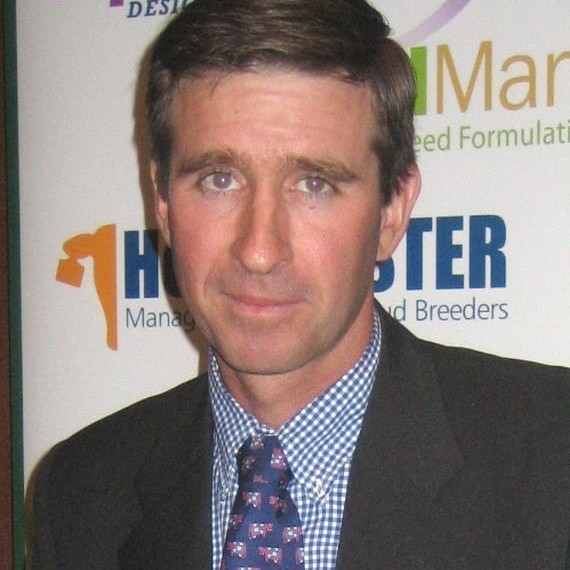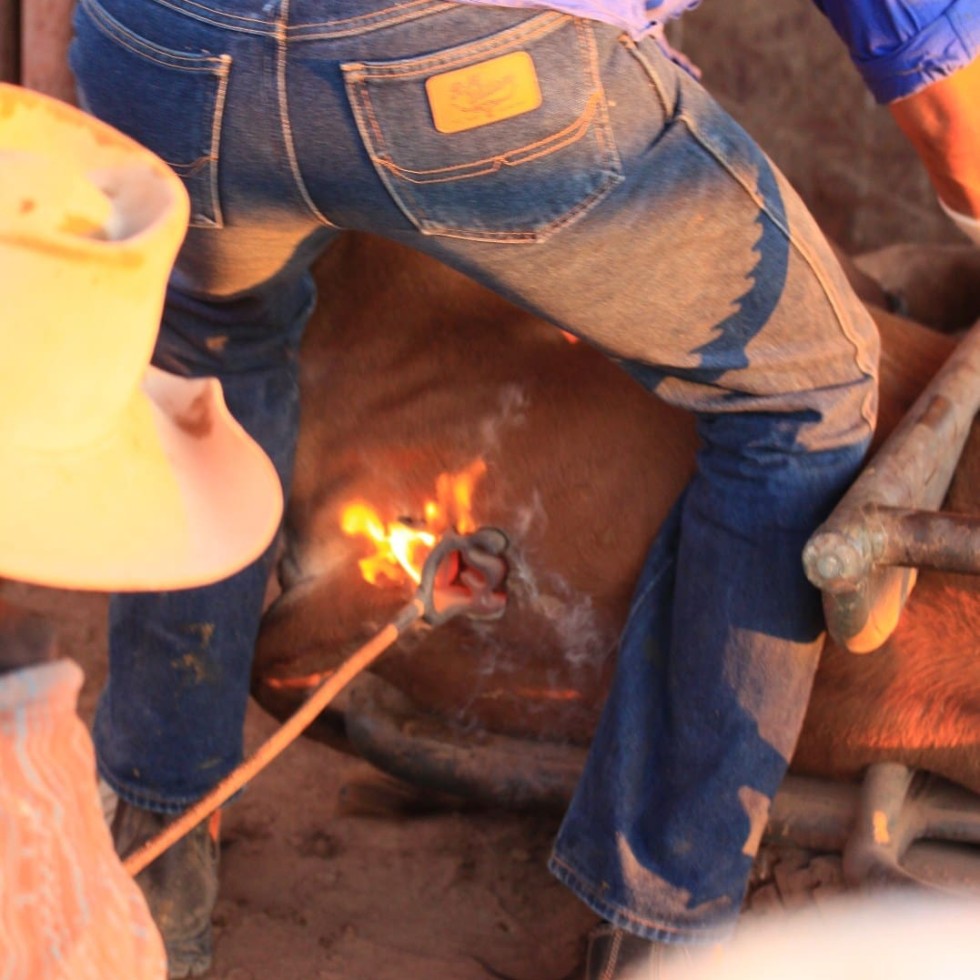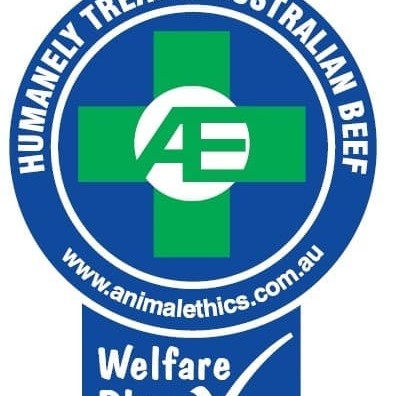 The Australian beef industry already has a sound reputation for humane animal treatment, but that could move up a notch as a result of an exciting project working towards development of a pain management tool for use during husbandry procedures like dehorning, branding and castration.
The Australian beef industry already has a sound reputation for humane animal treatment, but that could move up a notch as a result of an exciting project working towards development of a pain management tool for use during husbandry procedures like dehorning, branding and castration.
The project will be discussed briefly during an address to the Queensland Rural Press Club this afternoon by one of its instigators, Northwest Queensland cattleman Zanda McDonald, from MDH Pty Ltd.
A pain management product based on the compound, trisulphan, was originally developed by a group led by Chick Olsson for use in mulesing within the sheep industry.
The beef industry application will use an aerosol spray formulation, rather than a liquid form used in sheep. The treatment is designed for use post-operatively, meaning that the de-horning process is carried out, and the spray applied immediately afterwards, to provide a long-lasting anaesthetic effect.
The project’s backers, which include MDH Pty Ltd, former AWB director Chick Olsson, University of Sydney and Bayer, suggest field trials have now largely proven the efficacy of the treatment.
Importantly, from a commercial cattle industry perspective, the procedure does not slow the branding process down in any significant way, taking only seconds to administer. Cost is still a long way from being clarified, but under current non-commercial circumstances, is around $1.50 a head, to do both the two horn wounds and the brand site. For those practising surgical castration, the cost could be a little more, although general cost can be expected to come down after commercial release.
University of Sydney trials have suggested that the trisulphan spray is the best outcome currently available for pain relief. The product also provides an important secondary benefit in stemming blood flow, through a clotting process.
MDH’s Zanda McDonald will tell today’s Brisbane gathering that research had demonstrated significant pain relief after dehorning of between eight and twelve hours, by which time the calf was well and truly back suckling its mother.
Bayer Australia, which manufactures and owns the license to the trisulphan compound, is keen to commence the registration process, so the product can be released commercially.
“We actually think the development of the product is there – we are just looking for Meat and Livestock Australia, or Bayer, or some other body to come forward to put some money into the registration process,” Mr McDonald said.
He said his development group was ‘somewhat disappointed’ at the lack of MLA support for the accreditation stage of the project, given its potential implications for industry.
 Extensive trials have already occurred on the McDonalds’ Cloncurry property, Devoncourt, and other stakeholders, including the Australian Agricultural Co, have done their own in-house trials, producing positive results.
Extensive trials have already occurred on the McDonalds’ Cloncurry property, Devoncourt, and other stakeholders, including the Australian Agricultural Co, have done their own in-house trials, producing positive results.
“The problem is the product is not currently registered for commercial application on beef cattle,” Mr McDonald said.
“That means we can use it, but it has to be prescribed by a veterinary surgeon. But ideally it needs to be an off-the-shelf product that producers can simply pick up at their local Landmark merchandise branch.”
The product is approved for use in beef cattle, but in order to come to market, it needs to go through registration, which could take 18-24 months, and could potentially cost more than $1 million.
“That’s why it needs a Bayer, or an MLA, both, or some other body to take it forward,” Mr McDonald said.
He said there were no issues over potential residue from trisulphan, meaning it was a ‘quite straightforward’ registration process.
So benign was the compound that MDH makes it available in the cattle yards, and ringers who cut themselves superficially sometimes used it as an instant anaesthetic and clotting agent, with great effect.
Mr McDonald said the RSPCA was aware of the progress made in the product’s development, was supportive of the work, and was ‘keen to pay a visit’ to assess its efficacy.
The Australian Veterinary Association was organising for Dr Temple Grandin (famous US-based animal behaviourist and animal welfare expert from Colorado State University) to visit next year to assess the product, he said.
“We really need somebody with great credibility like Dr Grandin to give the product all the ticks,” Mr McDonald said.
Adopting brand claims about humane treatment
 Even before the trisulphan product reaches the market, movement is happening in the development of beef brand and label claims over humane treatment of stock, incorporating the anaesthetic.
Even before the trisulphan product reaches the market, movement is happening in the development of beef brand and label claims over humane treatment of stock, incorporating the anaesthetic.
“There is no doubt that dehorning and castration, done on a daily basis in the beef industry is already emerging as a community issue, and that was one of the drivers for MDH to get behind this project as part of the solution,” Mr McDonald said.
“But as we progress with our own commercial beef brand development, we’ve been watching with interest what is happening in North America. Consumers there have indicated they are willing to pay a higher price for beef coming from ‘ethically treated’ animals than they are for Certified Organic beef.”
“We can’t see why that’s not going to happen in Australia, Europe and probably the rest of the world, over time,” he said. “Certainly in Australia, I think there is already a huge opportunity in this area.”
One of the challenges was in finding ways to credibly attach more humane treatment of animals, to beef brands – in MDH’s case, well known beef brands such as Wallumba.
The more recent investment by MDH in the Super Butcher warehouse retailing business (see second story later this week) has since emerged as a potential conduit through which to relay such messages to consumers.
The prototype logo image published above, could be part of that process. This could become an ‘industry wide’ logo, for those adopting the anaesthetic treatment, Mr McDonald suggested.
The vision is that this logo would become akin to a Cattlecare accreditation, owned and managed by the industry. Ideally another ‘tick box’ would appear on the National Vendor Declaration form, providing auditable declarations for ethical treatment and pain relief during dehorning/branding.
The beauty of the Super Butcher business, in which MDH owns a 70 percent stake, is that it provides a mass-market engagement with consumers, through six outlets in southeast Queensland, now utilising about 5000kg of MDH beef each week.
“Once we have broader industry and community group endorsement for the trisulphan treatment, we will move towards identifying that at retail level, to our customers,” Mr McDonald said.
While terms like ‘humanely’ or ‘ethically’ treated covered a wide spectrum of livestock production activity, there were already extensive Australian industry codes of practise on issues like livestock transport, lotfeeding and a host of other animal management practices. But issues like dehorning were one of the last areas where there are no real codes or standards in place.
“That makes it a larger animal welfare target,” Mr McDonald said.
“It is much better that the industry itself find solutions to such challenges, rather than having some lobby group place unrealistic expectations or solutions on us,” he said.
Already overseas, ‘humanely treated’ brand claims are starting to emerge. JBS in its US operations two months ago launched a brand called “Aspen Valley” which operates under USDA ‘humanely raised’ claims, using a network of approved suppliers.
It’s worth noting, however, that because of the extent of Angus genetics used in the US, the presence of horns is not an issue there for many producers.
“Longer term, the entire industry wants to use selective genetics to breed the horns off our cattle,” Mr McDonald said.
“But we are possibly 10-20 years or more away yet, from achieve that. In the meantime, we need an effective stop-gap measure until we have naturally polled animals,” he said.
EDITOR'S NOTE:
Meat & Livestock Australia has provided the following comment in response to references in this article to the absence of MLA financial support for the product's registration:
- The trisulphan product is licenced to Bayer Animal Health
- Due to the commercial nature of the project, funding support would be drawn from commercial and matching Government funds. It was therefore suggested that the investigators apply for project support through the MLA Donor Company, which exists to develop commercially-focused projects
- Following this, last week MLA received a proposal for funding of a project to investigate new methods of managing pain associated with various husbandry practices of northern beef cattle
- As with all industry projects, it will be subject to robust assessment prior to any approval
- Of course, MLA is focused on continued improvements to animal welfare and will continue to support industry to make those improvements efficiently and effectively.
